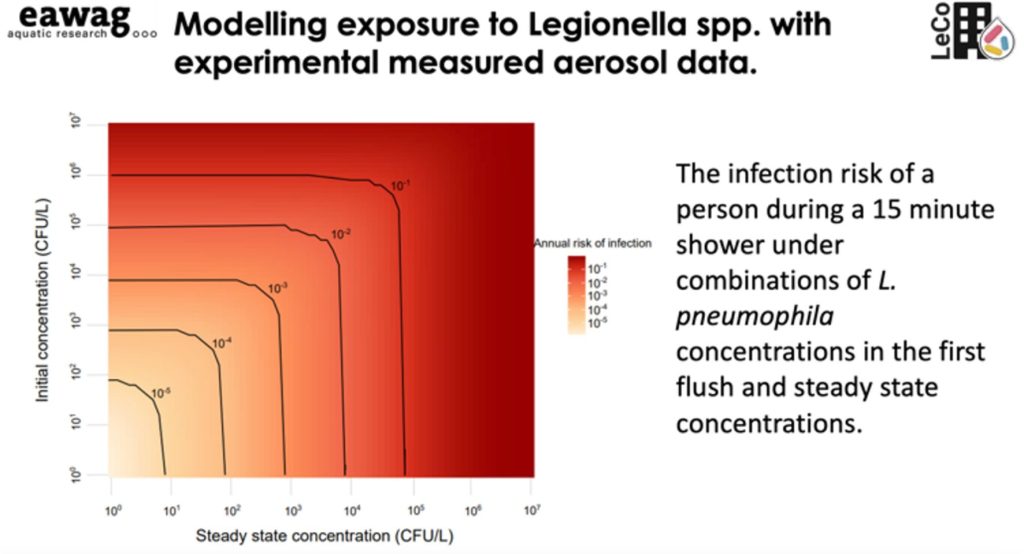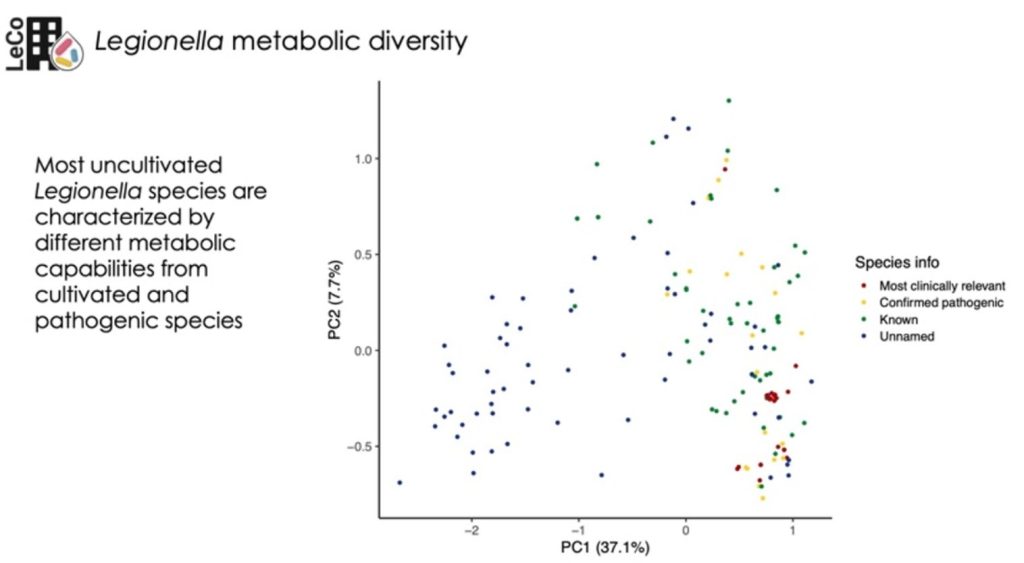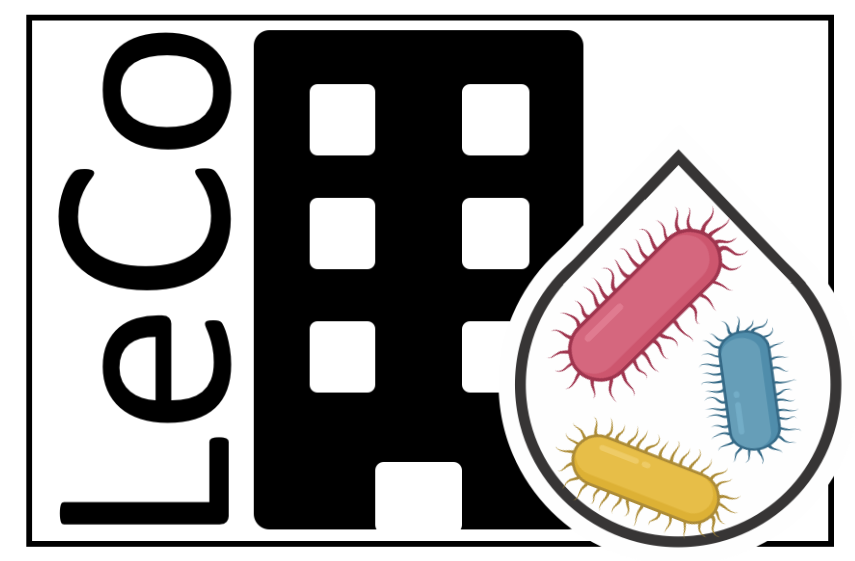The 7th ESGLI Meeting was held from 23-25 October in Crete. The meeting brought together a group of Legionella experts from around the world, and covered a range of interesting and thought-provoking topics such as: Why is it so challenging to find the sources for Legionnaires disease cases? Should we focus on L. pneumophila rather than Legionella spp. in legislation? What will be the impact of climate change on Legionnaires disease case incidence? The LeCo project was presented at the ESGLI Meeting by seven collaborators. Here are a couple of impressions from our five early career researchers.
Lizhan Tang (PhD): My poster was about modelling exposure to Legionella spp. with experimental measured aerosol data. I showed that from our experimental measured aerosol data, we observed that a peak concentration of aerosols can be reached within the first minute of a hot shower. For the model simulation, we integrated the aerosol concentration profile with different Legionella spp. concentration profiles during flushing and showed that this first minute contributes to most of the cumulative risk for a single exposure. Therefore, further control measures and intervention strategies should really take the first minute into consideration. A personal highlight for me from the meeting was that some of the presentations from the epidemiology session showed a time lag between the onset of disease and date of exposure. If we want to apply QMRA (Quantitative microbial risk assessment) frameworks to a specific outbreak instead of sporadic cases, a time dependent dose-response relationships might be considered to properly account for the incubation period of pathogens within the host.

Marco Gabrielli (post-doc): My presentation explored the diversity of the genomes of Legionellacea species. I highlighted the differences of the genes related to mobility, cell envelopes and metabolism across this bacterial family, and how part of those traits seems more conserved across the most pathogenic species. From the other talks I found the presentation of Ermanno Federici (University of Perugia) very interesting – they showed that several Legionella species are common members of the microbiome of different natural water sources, indicating their ubiquitous presence and their capacity to live in conditions usually not deemed optimal for their growth.

Emile Sylvestre (post-doc): I presented a meta-analysis comparing L. pneumophila monitoring results obtained with qPCR and cultivation methods in drinking water systems. This analysis revealed that while quantitative PCR (qPCR) and cultivation often produce similar results, differences can arise under certain conditions, like fluctuating hot water temperatures, where qPCR detects higher levels, indicating the need for targeted research to identify these conditions. A highlight from the conference was Prof. Michèle Prévost’s talk on the opportunities and challenges of monitoring L. pneumophila in cooling towers and wastewater treatment plants.

Alessio Cavallaro (PhD): My talk was about our work on the bacteria that are antagonists to Legionella and the anti-microbial compounds that they produce. I showed how we were able to identify ten bacteria that can inhibit Legionella, and how we could identify and isolate viscosin, one of the compounds responsible for this inhibition. What I found really interesting were the talks about Legionella typing, especially the ones dedicated to the tracking of the L. pneumophila strains/matching clinical and environmental strains (Sebastien Faucher, Maria Scaturro, Dimosthenis Chochlakis, Paulo Gonçalves). I knew very little about this and it was a good opportunity to learn something interesting.

Melina Bigler (PhD): My poster presented the first preliminary results from the ongoing SwissLEGIO-LeCo national case-control and molecular source attribution study. We completed the environmental data collection . We collected a total of 128 household samples (from showers and kitchen faucets) and 95 other environmental samples including from elderly homes, a carwash, a sports facility and a spa. The isolates are characterised using Whole Genome Sequencing (WGS). WGS revealed some clustering of L. pneumophila isolates in the southern part of Switzerland. Deep dive analysis of these clusters is ongoing. The talk by Jimmy Walker on climate change and consequences for the potential increased abundance of Legionella in the environment was thought provoking particularly in the light of increasing energy consciousness.




